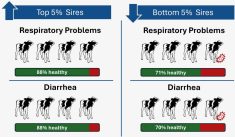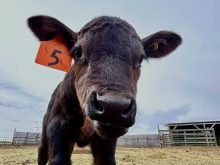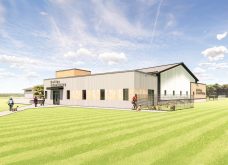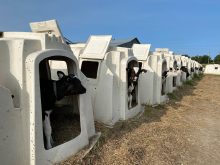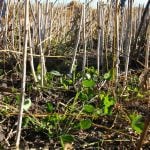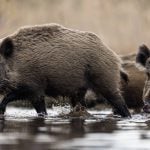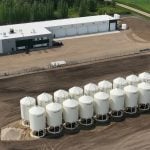More dairy farms are turning to group housing. In this second article on housing young calves, how group housing is working on farms. (Read the first article here)
The content of this article comes from a video podcast produced by the Dairyland Initiative at the University of Wisconsin-Madison. It is hosted by Courtney Halbach, extension specialist, and Nigel Cook, a specialist in the impact of the environment on dairy cattle welfare.
In group housing, compared to individual pens or hutches, everything is different. “It seems idyllic to me,” says Cook. Hallbach, however, says that it is not necessarily so, especially in large groups. Again, it is a housing method that has its pros and cons.
Ventilation: The key!
Having the animals in a common environment means that if one calf is sick, the others can quickly catch the disease. That is why air quality is important. “Good health starts with good ventilation,” explains Hallbach.
She adds that fresh air never harms the calf if the nursery has been well designed. She adds that great attention must be paid to the calf’s microenvironment.
Unlike cows, calves do not generate enough heat to stimulate air movement in the building, which is called the chimney effect. The warm air produced by the cows rises and mixes with the cold air that would otherwise tend to fall. This is what happens in a nursery.
However, calves need a minimum of four air changes per hour in winter. It is therefore necessary to pay attention to air inlets. The partitions in the buildings are also important since they create barriers that prevent wind from circulating.
Positive pressure tubes
A good way to bring in fresh air without the cold air falling directly on the calves is through natural ventilation provided with positive pressure tubes. These tubes are connected to fans that provide fresh air to the calves, without drafts. It is relatively inexpensive. Since it is in positive pressure, it does not create difficulty in opening the doors. It’s easy to operate.
Feed calves in groups can also be easier, with automated milk feeding systems now popular and in long use across the industry. These systems do require more maintenance and calf health has to be monitored. Labour, however, is reduced and calves get milk when they are most in need of it.
Read Also
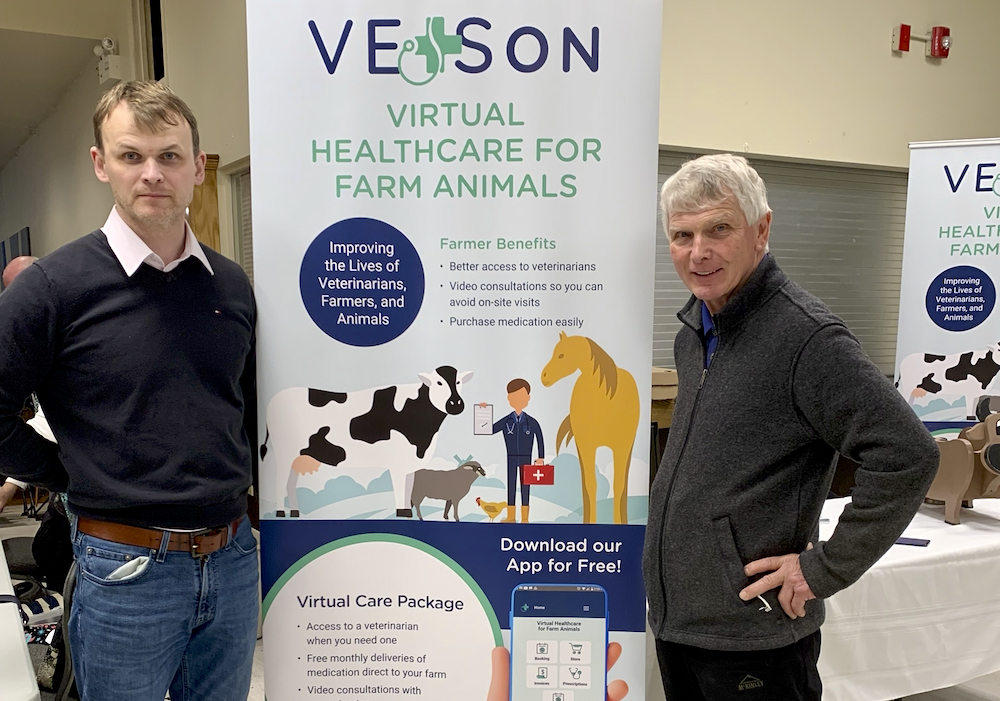
Remote care start-up adds vet medicine delivery app
Almost a year after expanding its veterinary telemedicine platform to include direct-to-farm delivery of medications, information technology start-up VETson now offers a medication ordering/distribution/delivery app.
Multiple small, narrow buildings
With larger herds in the United States, experts are talking about the possibility of housing calves in small, narrow buildings. Being able to manage the building in an all-in/all-out manner limits the risk of disease. It’s also easy to ventilate.

Pair housing
Pair housing is a compromise between individual housing and large groups. Two is already better than a single calf.
The big benefit is in terms of social interaction. The calves play together and stimulate each other. It prepares them for group life and new things.
Housing calves in pairs encourages them to eat more. They also increase their average daily gain. The calves also have a better weaning weight. Another advantage is the better social acceptability in the population.
“There are no negative points,” says Cook. “What’s interesting about this system is that it’s not a big change from individual housing,” adds Courtney Hallbach.
However, these two experts point out that this type of housing has not been as popular as expected. They say they’re surprised by this. They are concerned that producers don’t understand the importance of developing social behaviors in calves. Some producers are afraid of suckling between calves, although research has shown that if calves get the milk they need, suckling is minimal.
Pair housing can be done in pens, but also in hutches. Some are designed for two calves.
Factors for successful calf housing
In conclusion, here are the factors for successful calf housing:
- colostrum management
- milk quality and quantity
- hygiene, sanitation
- animal density
- age groups of calves in the pen and building
- dry bedding and cleaning
- disease detection and treatment
- ventilation and air quality




